Physician salary report 2025: Incomes are up, but dissatisfaction persists
August 21, 2025
The 2025 Medscape Physician Compensation Report draws insights from more than 7,300 U.S. physicians across 29 specialties, offering one of the most comprehensive snapshots of how the profession fared financially in 2024. While the data show modest income growth overall, they also underscore persistent challenges—widening pay disparities, rising workloads, and growing dissatisfaction with how compensation reflects the demands of the job.
Here’s a closer look at the key findings shaping the financial and professional outlook for physicians.
Physician salaries experience modest growth
In 2024, the average physician income rose to $374,000, up from $363,000 the previous year. This represents a modest increase of just 2.9%, among the lowest increases since the inception of the Medscape report in 2011. In fact, nearly 70% of physicians reported either flat earnings or only single-digit increases, a sign that post-pandemic salary gains have largely tapered off.
Specialists continue to out-earn primary care physicians significantly, commanding an average income of $404,000.
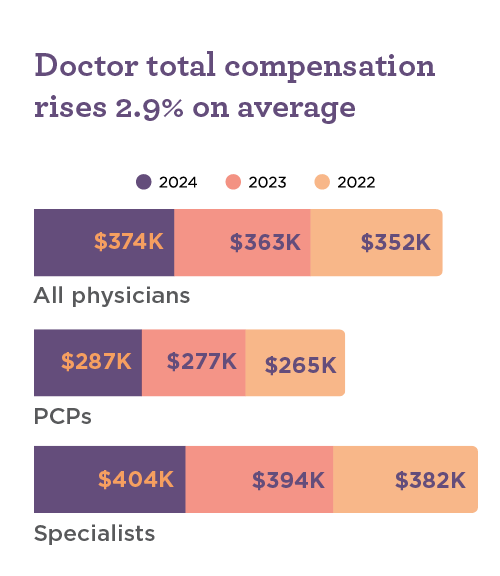
Earnings satisfaction hits 10-year low
When asked whether they were satisfied with their compensation, a striking 52% of physicians said “no”—the lowest satisfaction rate in a decade of Medscape surveys. Many point to increasing documentation demands, mounting financial pressures, and burnout-inducing schedules as key drivers of their dissatisfaction.
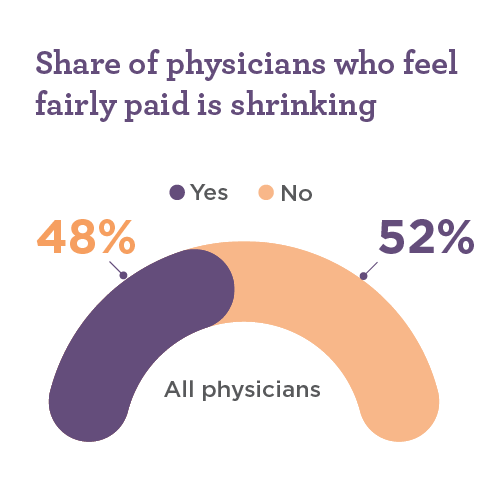
Most physicians acknowledge they aren’t struggling to make ends meet: 71% say their income covers—or even exceeds—their living expenses, debt obligations, and retirement goals. However, many feel their compensation doesn’t reflect their work's intensity, responsibility, and complexity.
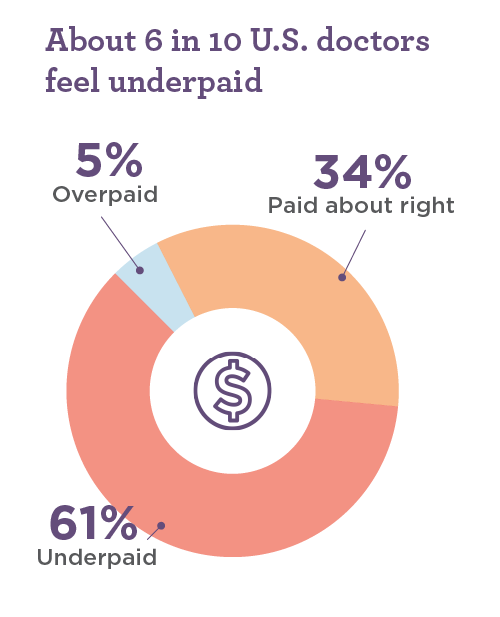
That sentiment grows stronger when physicians consider the profession as a whole. Sixty-one percent believe doctors are underpaid industry-wide, citing systemic challenges such as rising bureaucratic burdens, declining reimbursement rates, and the strain of RVU-based compensation models as major contributors.
Boost your pay with locums: How does locum tenens pay and salary work?
Top-paid specialties: Procedures reign supreme
Consistent with previous years, the highest-earning specialties in 2024 were those driven by volume of procedures rather than consultations. Orthopedics topped the list with an average income of $564,000, followed closely by plastic surgery, radiology, cardiology, and gastroenterology.
Specialty pay: Who’s up, who’s down
Most specialties saw little movement in compensation this year, with many reporting modest gains, stagnant income, or even declines. Diabetes and endocrinology specialists led the field with a 7% increase—the most significant gain across all specialties. In contrast, dermatologists and neurologists experienced notable setbacks, with pay dropping by 5% and 3%, respectively.
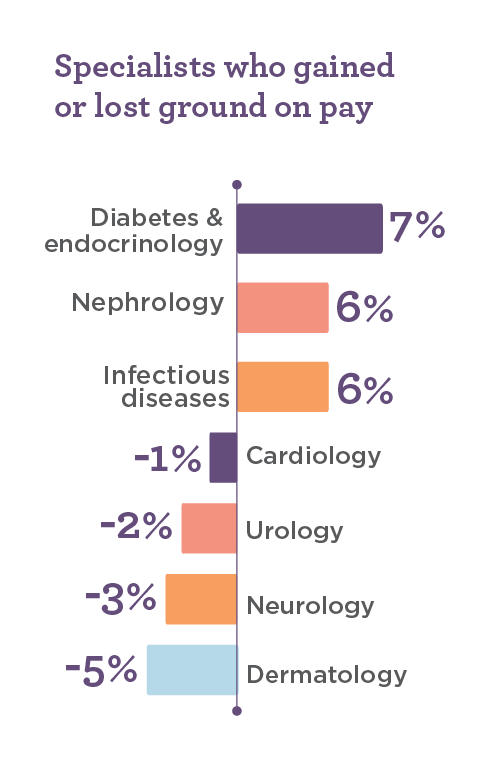
Compensation trends by region
At an average annual income of $385,000, physicians in the Midwest consistently outpace their peers in other regions when it comes to earnings. This trend is largely driven by supply and demand; hospitals in rural and underserved states often offer higher salaries, generous signing bonuses, and loan repayment incentives to attract talent and compete with more densely populated urban markets.
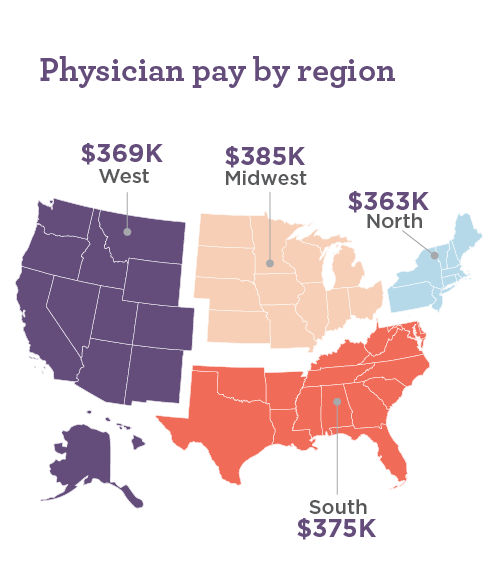
Workweek trends
The average physician workweek has remained relatively stable over the past seven years, and the survey indicates consistent demand across specialties in comparison to primary care. However, many physicians report working additional hours at home or on weekends to meet the ongoing demands of their practice. Regarding patient volume, respondents reported seeing an average of 73 patients per week in 2024—down slightly from 74 the previous year.
Physician Sentiment Survey: What physicians think about work and leadership
Gender pay gap widens
Across the past three surveys, the gender pay gap has not only persisted—it has grown wider. According to the latest report, the average difference in earnings between male and female physicians increased by $10,000, now exceeding $96,000. The underlying causes remain the subject of ongoing debate; some point to decision-based factors, such as the overrepresentation of male physicians in higher-paying specialties like orthopedics and general surgery, while others highlight entrenched structural biases within the healthcare system.
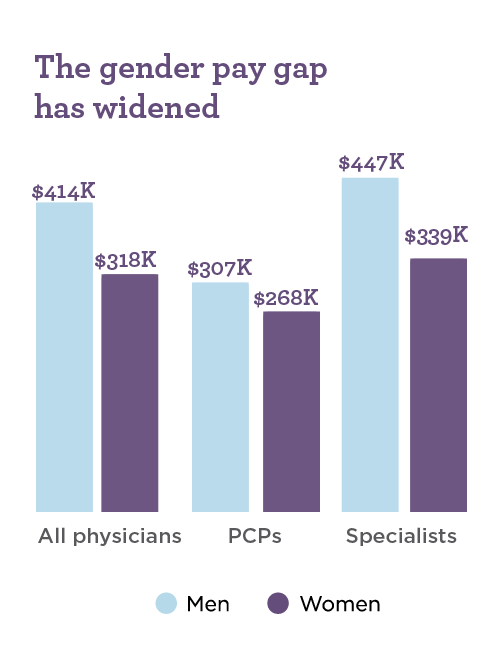
Appetite for supplemental income opportunities
Physicians are uniquely positioned to take on supplemental work—thanks to their in-demand skills and flexible practice environments—and many are seizing the opportunity. Nearly four in 10 report taking on extra work to boost their income. Whether to pay down student loans, keep up with the rising cost of living, or gain new professional experiences, both primary care physicians and specialists are turning to options like telemedicine, ER moonlighting, and locum tenens to expand their earning potential and broaden their scope of practice.
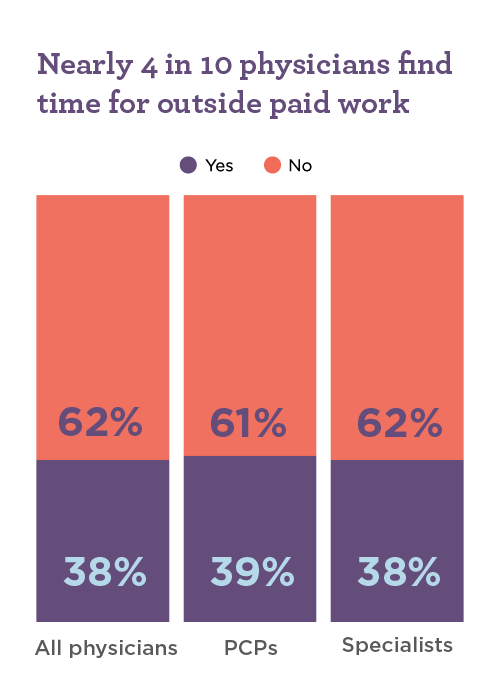
While physician incomes saw modest growth in 2024, the data tell an important story: compensation alone doesn’t reflect the full picture of physician satisfaction. From widening gender pay gaps to growing frustration over RVU-based models and documentation demands, many doctors are exploring new ways to take control of their careers and their earnings.
For a growing number of physicians, supplemental work like locum tenens offers a path forward. It can provide greater flexibility, new clinical experiences, and additional income.
CompHealth can help you find the opportunity that’s right for you. View current physician job openings or give us a call at 800.453.3030.